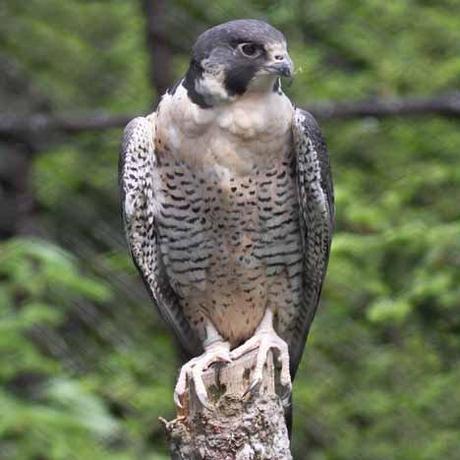Quick update. The snow has stopped and now comes the task of shoveling out. School was cancelled and my kids think it means *another* day of staying in their jammies and getting caught up on Downton Abbey.
Not so fast, my little poppets. Oh yes, we have plenty of snow plows in our family, we have 6 strong sturdy ones. Suit up kids, hot chocolate and TV rewards only after your work is done.
******
As many of you recall, this summer we were visited by a large bird of prey. I found it sitting in our yard twice and then one day, I saw it flying off with our beautiful Sebright bantam – Isabelle.
In the past I’ve seen plenty of hawks in our wooded area. In fact, over the years, we have watched a family of Red Tail hawks grow and mature (it turns out that adolescent hawks, much like adolescent humans, tend to be very mouthy, making quite sure all know that they are around.) Hawks are beautiful and definitely have a kind of majesty about them, which is all well and good, as long as they keep that majesty away from my chickens.
But I didn’t think that that was what we had here.
Even after several additional neighborhood sightings, with one neighbor to our right saying “yes, it was most definitely a hawk” while another down the street telling us “it’s an eagle” and explaining how it had attacked (and killed) her cat, we still didn’t have definite confirmation on what breed this bird was. It was smaller, it had more of a football shape, the wings weren’t as broad, the breast was lighter.
I had my suspicions, but could just never get a good enough look at it. Frustrating? Yes.
And then last week, while I was returning from the grocery store with my daughter Emma, we saw a large light-colored-but-not-really bird fly across the street and land on the top of a telephone pole.
“Is that? Is that? ..” I stammered, not believing our luck. I drove up to the pole and parked directly under the bird. We quietly leaned out of our windows to get a look.
Light colored chest with dark spots – check
Grey/brown head – check
Grey/brown back feathers – check
Vertical stance as opposed to horizontal – check
As soon as we got home I pulled out our birding books and yes, indeed, this is exactly what we saw. (note I didn’t have my phone with me and so couldn’t take a photo – I know, I know, my kids can’t understand how I can leave the house without my phone. This photo is from the Audubon Society, but if I had had a camera, this is exactly what my photo would have looked like.)

It’s not a hawk. It’s not an eagle. It’s an adult peregrine falcon and it’s gorgeous.
According to Wikepedia, here’s a little about the peregrine falcon – While its diet consists almost exclusively of medium-sized birds, (ahem, including *my* chickens) the peregrine will occasionally hunt small mammals, small reptiles, or even insects. Reaching sexual maturity at one year, it mates for life and nests in a scrape, normally on cliff edges or, in recent times, on tall human-made structures.
Even though I’m not fond of any creature terrorizing or killing members of my flock, it’s important to know that these birds deserve respect. Wikepedia states:
The peregrine falcon became an endangered species in many areas because of the widespread use of certain pesticides, especially DDT. Since the ban on DDT from the early 1970s, populations have recovered, supported by large-scale protection of nesting places and releases to the wild.
Although peregrine falcons have been removed from the Federal Endangered Species list, according to the New Hampshire Fish and Game Department, they remain classified as an endangered species in New Hampshire.
We have a current effort by a private company to run a 36” transportation gas pipeline through our town. Along with many other concerns, (explosions, leaks, loss of property value, impact to our wildlife and our water supply) in order to maintain the pipeline, the for-profit company, Kinder Morgan has said they would use pesticides along the route of the pipeline (poison ivy is rampant in New Hampshire and that’s just one of the aggressive weeds/vines that would have to be controlled.) As much as I dislike the falcons bothering my flock, I recognize their right to a territory and I rejoice at their presence in our community. Having falcons around is an indication of a strong eco-system.
I sincerely hope that the strength of our eco-system does not have to compromised in the name of private profit.
***
Wendy Thomas writes about the lessons learned while raising children and chickens in New Hampshire. Contact her at [email protected]
Also, join me on Facebook to find out more about the flock (children and chickens) and see some pretty funny chicken jokes, photos of tiny houses, and even a recipe or two.
Like what you read here? Consider subscribing to this blog so that you’ll never miss a post. And feel free to share with those who may need a little chicken love.

